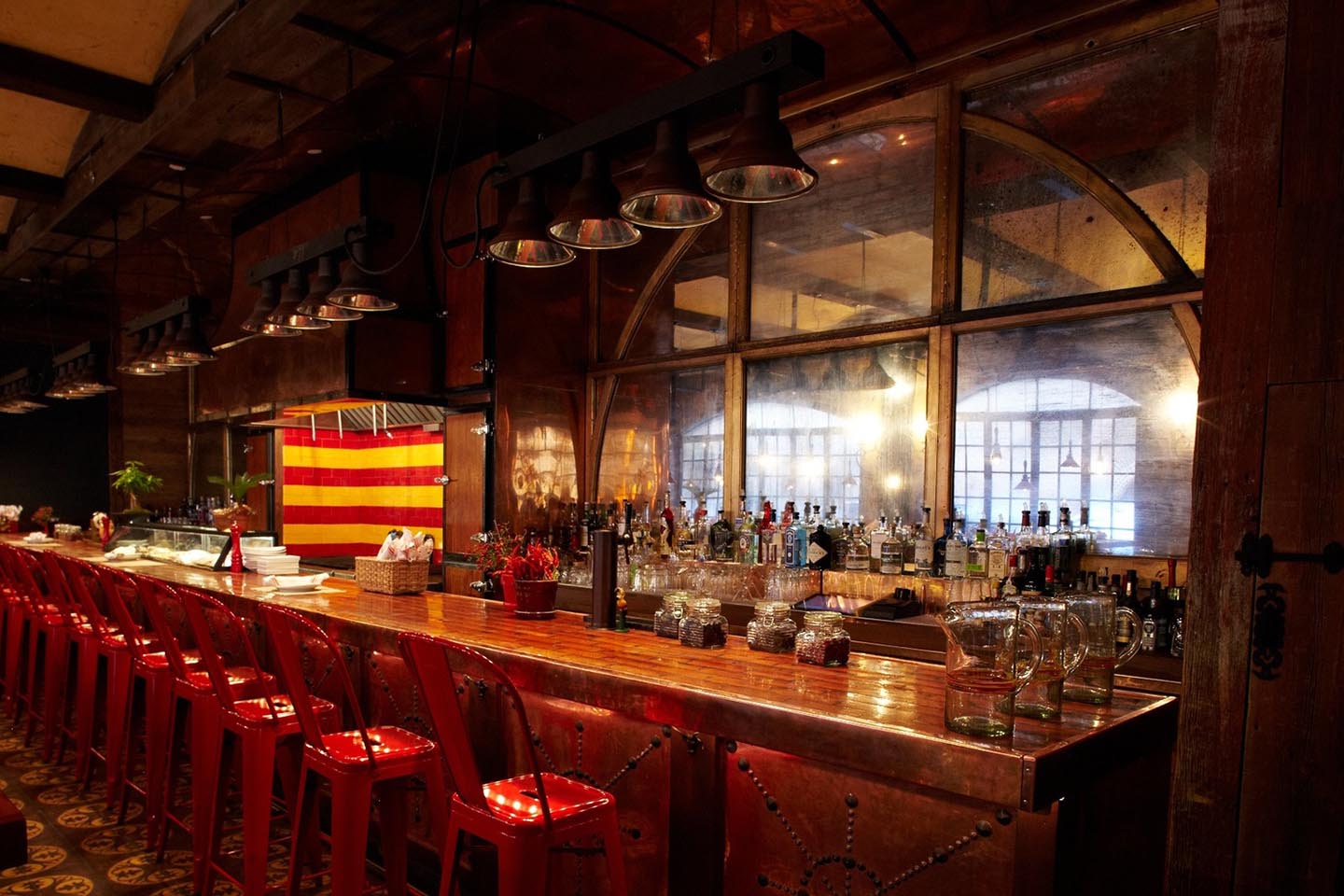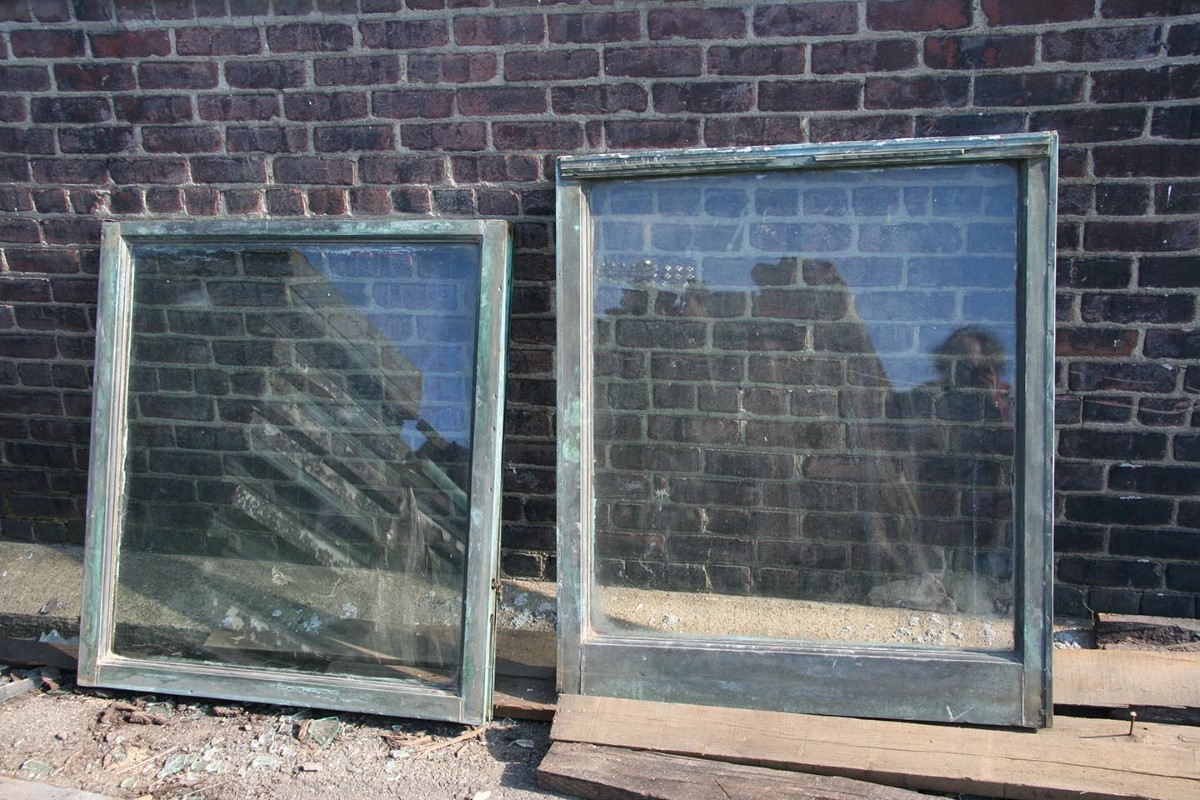Every object at Olde Good Things has a story. Sometimes the story is lost, and the object remains silent with mystery, keeping its stories to itself. But sometimes the details survive, and we salvage not only a physical, tangible item but also bits and pieces of its past.
Yellow Metal
This particular story begins all the way back in 1832, in Birmingham, England, when industrialist George Frederick Muntz patented a new brass alloy, a 60/40 mix of copper and zinc with trace amounts of iron. Muntz designed his metal as a cheaper substitute for copper, intending it for use in the sheathing of boats. Like copper, Muntz’s alloy resisted corrosion from salt water and also prevented organisms like barnacles and mollusks from attaching to a ship’s hull – at a fraction of the cost of pure copper. Muntz metal (as it came to be known) became very popular in the shipping industry; the hull of the famed tea clipper Cutty Sark was clad in Muntz metal, and to this day, shipwreck divers continue to recover “Yellow Metal” stamped with Muntz’s name.
Interest in Muntz metal began to extend into other industries. Designers valued its color, a soft golden yellow that matures into a reddish-brown patina over time. Architects valued the alloy for its malleability and strength, using it in roofing, trim, and paneling. Noting that its anti-fungal properties protect wood just like pure copper, they also used it for door and window frames, which brings us to the next part of our story.
The Toy Center of the World
Fast forward a few decades to May 1, 1909, the opening day for the Fifth Avenue Building (200 Fifth Avenue) in New York City. The neighboring Flatiron Building, completed in 1902, had been drawing new activity and commerce into what is now the Ladies’ Mile Historic District.
The Fifth Avenue Building is an 800,000-square-foot commercial building, 16 stories high. Designed by architectural firm Maynicke and Franke, the building features a Beaux-Arts exterior and an impressive interior courtyard, clad in white terra cotta. When it was first constructed, its ground floor housed storefronts and a bank, and outside was installed an ornate two-faced cast-iron street clock (which still stands today, as a historic landmark). Among the earliest tenants were the Boy Scouts of America, who used the Fifth Avenue Building as their national headquarters from 1910-1927.
Then came the tumultuous years of World War I. In reaction to the devastation abroad, the United States enacted policies imposing restrictions and tariffs on imported products from Europe. These policies had a massive impact on American manufacturing, including one area that is of particular importance to our story – toys.
Beginning in these post-war years, the Fifth Avenue Building became a hub for the newly expanding American toy industry, earning it a new name – the International Toy Center. Over the next few decades, the Toy Center would house showrooms for dozens of major toy companies like Mattel, Tonka, Kenner, and Hasbro. Each year, the building played host to the American International Toy Fair, which showcased new products (such as, in 1959, Mattel’s new doll named Barbie). By the 1960s, Toy Center leases were restricted to only toy companies.
Interestingly, though stuffed with the latest toys, the Toy Center shrank from welcoming members of its most prized consumer demographic – children. A 1981 New York Times article warned interested visitors away:
But do not go to the center looking for fun. ”We are not here to entertain kids or the public,” says Morton Lieberman, who has worked in the center for 25 years, and takes a dim view of ”invaders” who ”try and play with everything; we’re here to do business.”
All things end, however, and the Toy Center was no exception. In the early 2000s, toy companies started to terminate their leases. In early 2005, the building was sold to new owners, and by 2007, the last toy tenants had moved out. Renovations in 2008 by STUDIOS Architecture converted the former Toy Center into an office building, known now simply as 200 Fifth Avenue. Major tenants include Tiffany & Co. and Grey Advertising, although appropriately the building also houses a Lego Store.
Copper-Clad Memories
Endings are also beginnings, and the end of the Toy Center offered an opportunity for the rebirth of some of its components. A primary feature of both the building exterior and the interior courtyard is paired fenestration, with sets of windows filling the façade. Also key to the building’s design are the arched windows lining its crown. During the 2008 renovation, all of these windows were replaced, and Olde Good Things moved in to salvage them. How were they clad? Muntz metal, of course.
In order to give these historic Muntz metal windows new life, we are converting them into hand-silvered mirrors. Already, some of the arched windows found a new home behind the bar at Cata, a restaurant on the Lower East Side. Other Toy Center windows have traveled to the homes of customers not only in New York but as far away as Atlanta, Washington, and even Brazil. Their Muntz metal cladding brings a warm glow to any environment, and there are several sizes available to accommodate diverse spaces.

Toy Center crown window mirrors at Cata

Mirror made from a copper window from the Toy Center’s neighbor, the Flatiron Building, displayed in a customer’s apartment
Is your interest piqued? Then perhaps it’s time to call one of our Toy Center Muntz metal mirrors your own. Install it in your living room, sit back, and listen. Let the Muntz metal tell tales of alloy ancestors who sailed the open seas on the bottoms of British boats. Let the windows whisper about their favorite toys. So many stories, all yours for the hearing.
Shop all Toy Center salvaged materials


